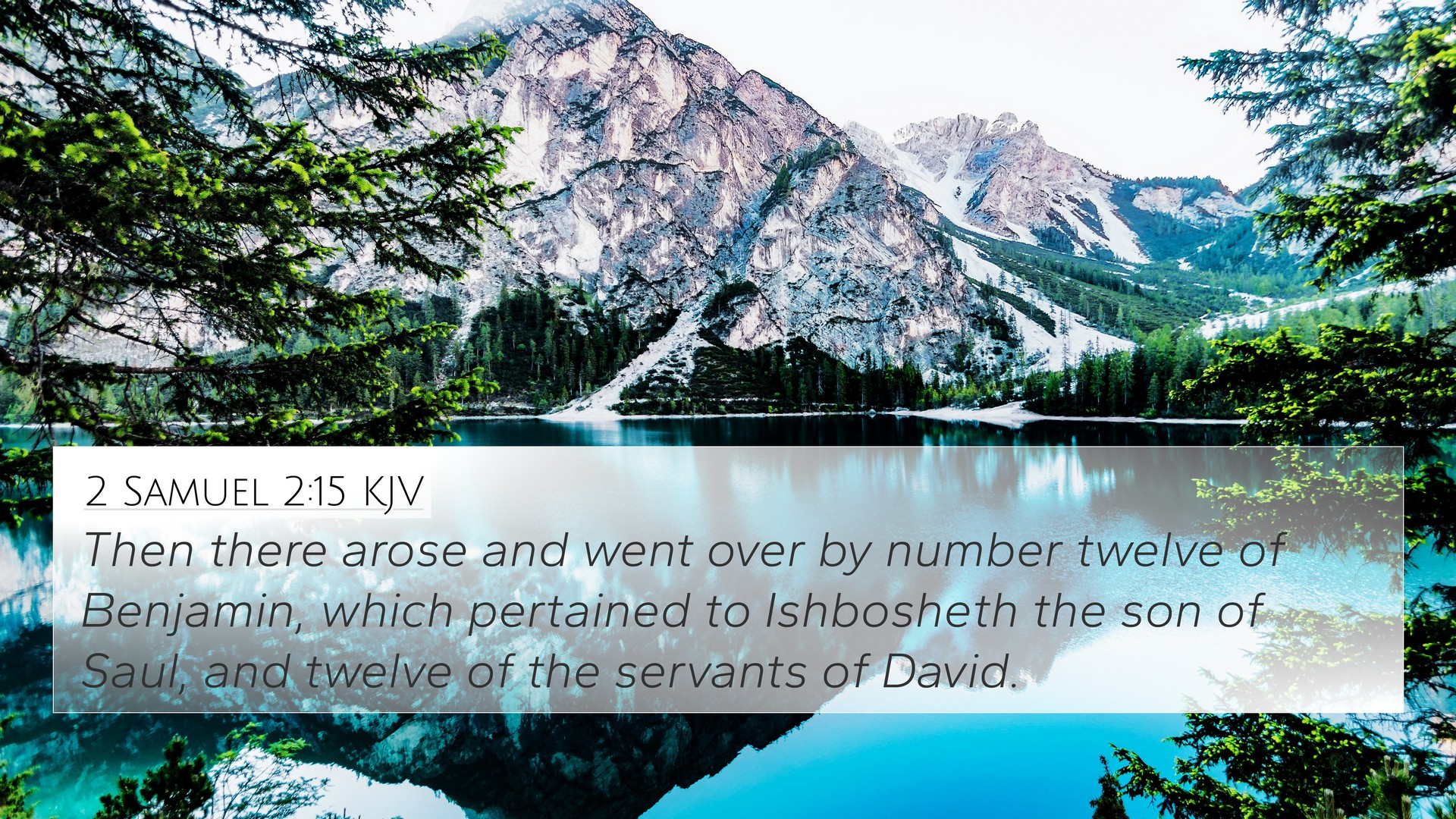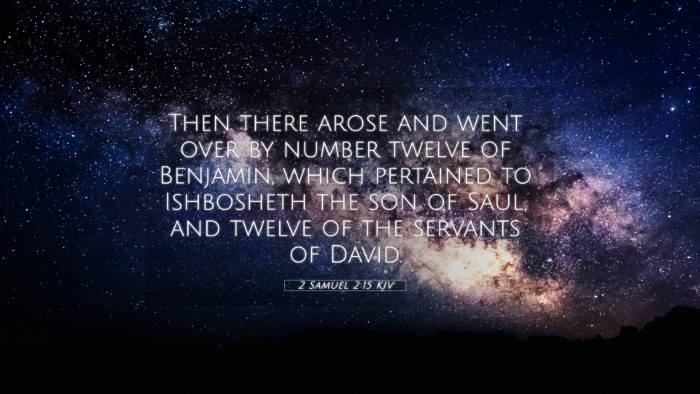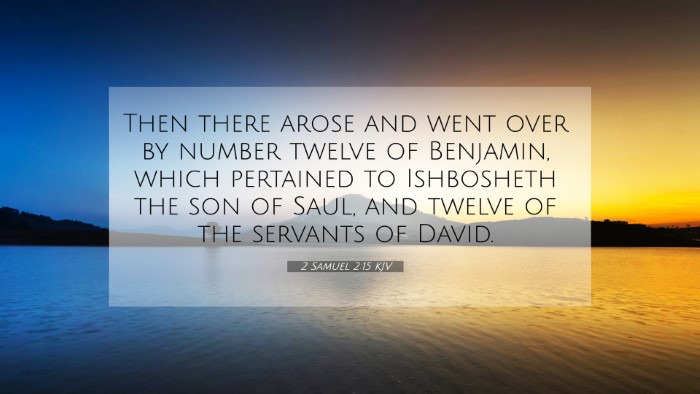Understanding 2 Samuel 2:15
2 Samuel 2:15 tells the story of a fierce contest between the servants of Ishbosheth, the son of Saul, and the servants of David. It highlights the conflict that arose in the aftermath of Saul's death as different factions vied for power. This verse also serves as a significant moment in the historical narrative of the establishment of David's kingship over Israel.
Verse Context
The backdrop of the verse involves a turbulent period in Israel's history. After the death of Saul, the kingdom was split, leading to rivalries and wars. David had already been anointed by Samuel but was not yet recognized as king by the whole nation. The engagement in a contest of strength reflects the political instability of the time.
Commentary Insights
Matthew Henry's Commentary
Matthew Henry emphasizes the importance of understanding the socio-political dynamics in play. The clash between Abner and Joab's men symbolizes the larger struggle for supremacy in Israel. Henry notes that this contest was not merely physical; it reflected deeper issues of loyalty and the future of the nation.
Albert Barnes' Notes
Albert Barnes highlights the significance of this event in the larger narrative of David's rise. He points out that this conflict was indicative of the divided loyalties within Israel. The actions of Abner serve to underscore the contention that existed following Saul’s reign and that the bloodshed in this contest foreshadowed further struggles for control.
Adam Clarke's Commentary
Adam Clarke provides insight into the characters involved in this contest. He discusses Joab, the commander of David's forces, and Abner, Saul's former commander, as central figures in this narrative. Clarke notes that these men were not only warriors but leaders whose decisions shaped the fate of their respective factions. He emphasizes the tragic nature of the conflict, as it pitted fellow Israelites against each other in a fight for power.
Thematic Connections
This verse is rich in themes such as:
- Conflict and Division: The struggle between two factions mirrors the larger divisions in society.
- Loyalty and Betrayal: The verse sets the stage for personal and national loyalties being tested.
- Leadership and Power: It portrays the complex nature of political power, showcasing how leaders emerge amidst turmoil.
Bible Verse Cross-References
There are several Bible verses that relate to the themes and events in 2 Samuel 2:15:
- 1 Samuel 16:13: David is anointed as future king, setting up the struggle for his legitimacy.
- 2 Samuel 3:1: Describes the ongoing war between the house of Saul and David, illustrating the broader conflict.
- 1 Chronicles 12:1-2: Refers to the bands who joined David, hinting at the shifts in loyalties.
- 2 Samuel 1:8-10: Reflects on the aftermath of Saul's death, leading to factions forming around different leaders.
- James 4:1: Provides a New Testament perspective on conflicts arising from desires among people.
- Matthew 12:25: Jesus speaks about kingdom division, connecting to the broader theme of unity versus division.
- Proverbs 16:28: Discusses the nature of strife and how it originates among leaders, relevant to Abner and Joab's actions.
- Psalm 133:1: Highlights the importance of unity, contrasting with the division seen in this narrative.
- Romans 12:18: Encourages peace with all men, applicable as an ideal contrasting with the violent conflicts of 2 Samuel.
Conclusion
2 Samuel 2:15 is a pivotal moment in biblical history that reflects the tumultuous transition of power in Israel. Understanding its implications requires examining the interplay of political loyalty, the nature of leadership, and the deep-seated conflicts that characterize human relationships. By cross-referencing this verse with related biblical texts, we can gain greater insight into the themes of division, the pursuit of power, and the complexities of fidelity in times of strife.
Tools for Bible Cross-Referencing
For further study, consider utilizing:
- Bible concordances that list verses by topic and help identify connections.
- Cross-reference guides that provide a structured way to explore related scriptures.
- Comprehensive materials available in study Bibles that contain cross-referencing notes.
- Online Bible study tools designed to facilitate cross-referencing and comparative studies.
- Academic approaches for identifying links between Old and New Testament scriptures.


